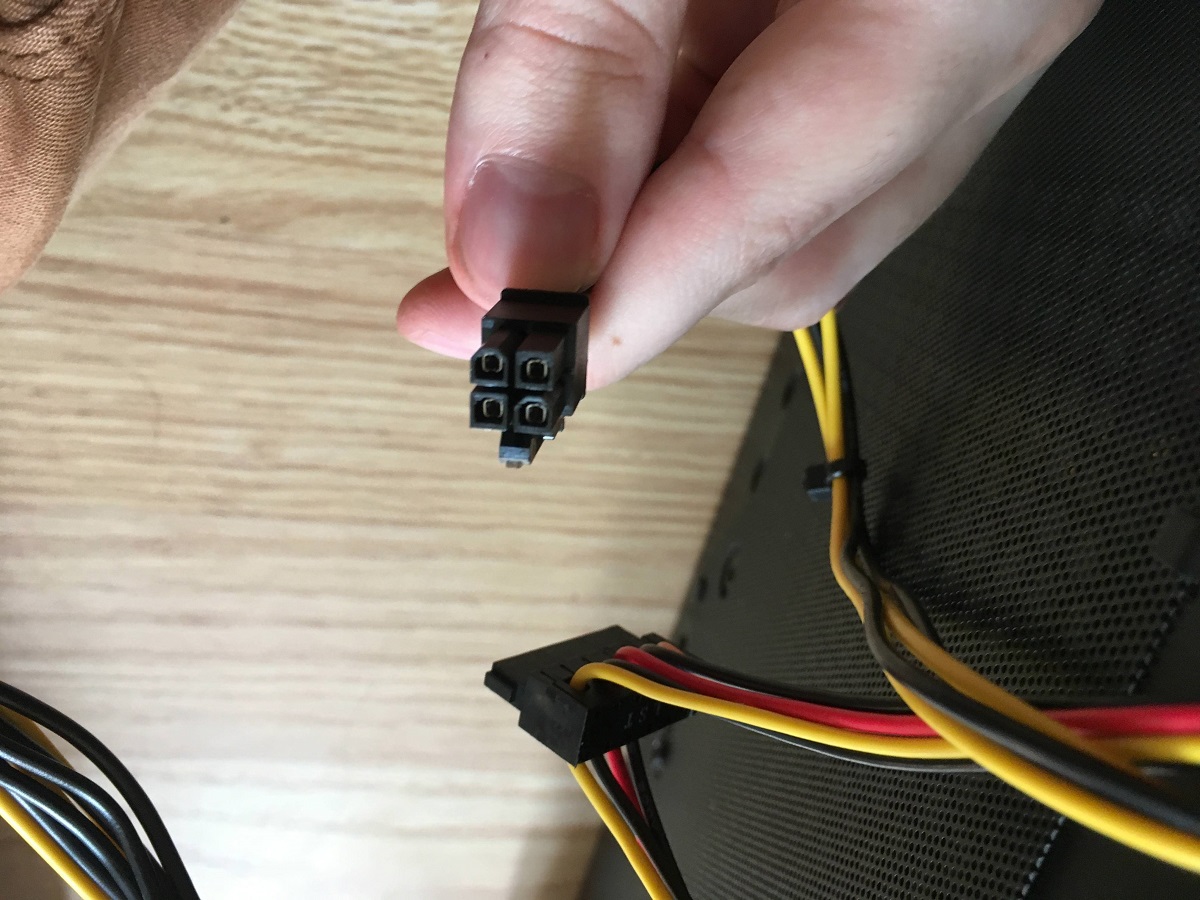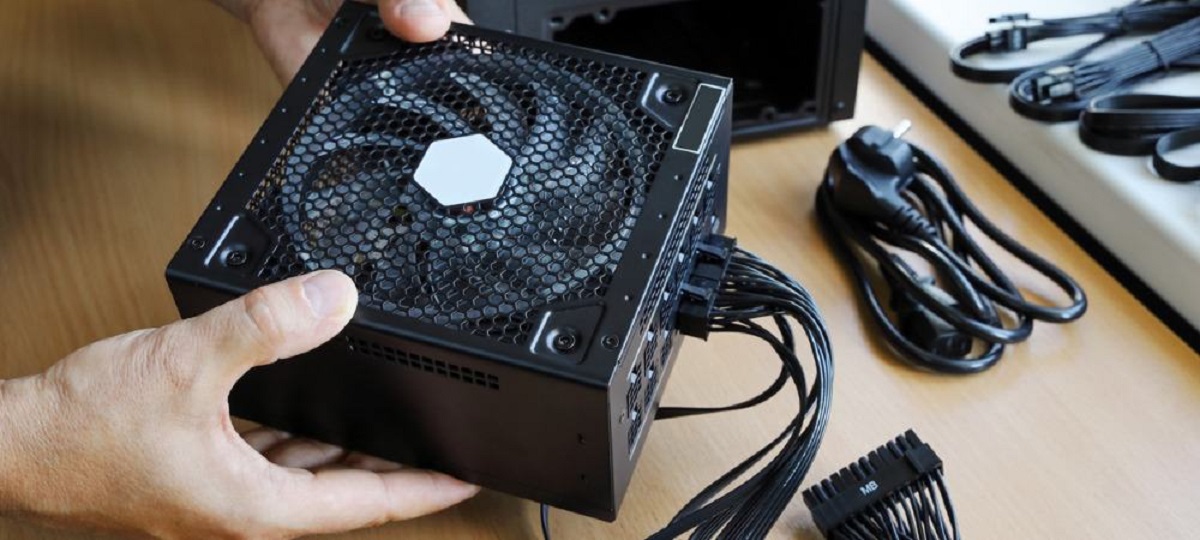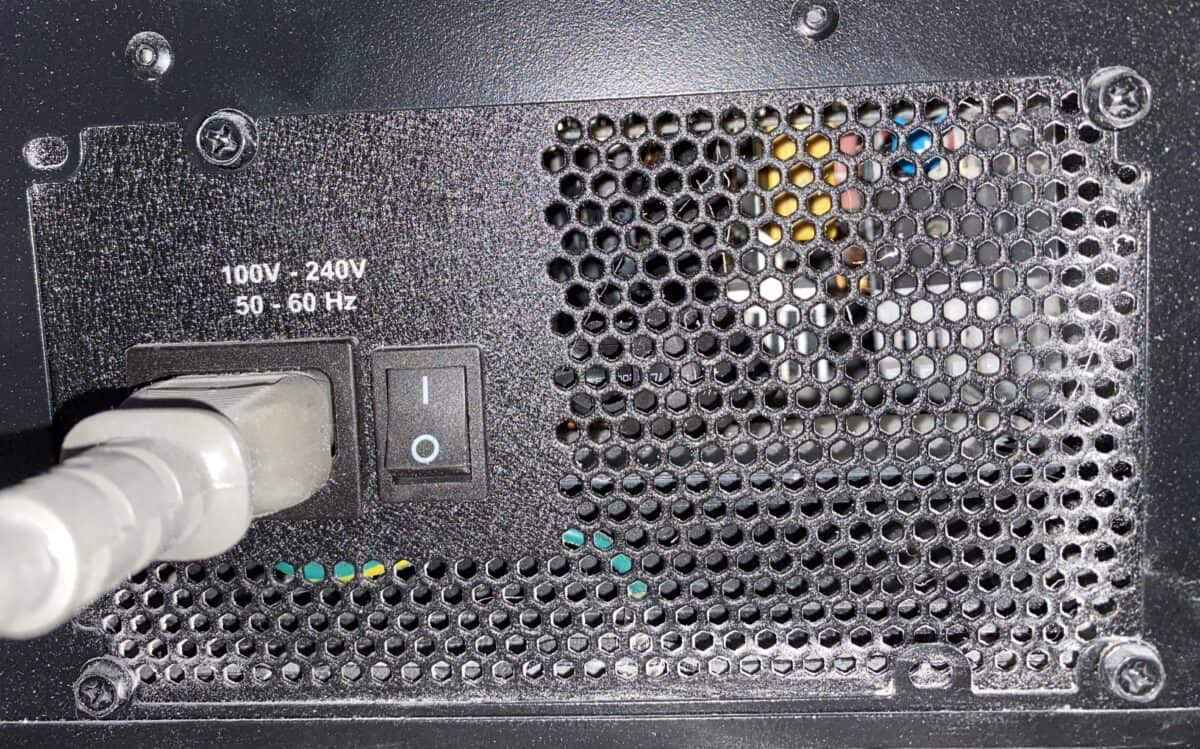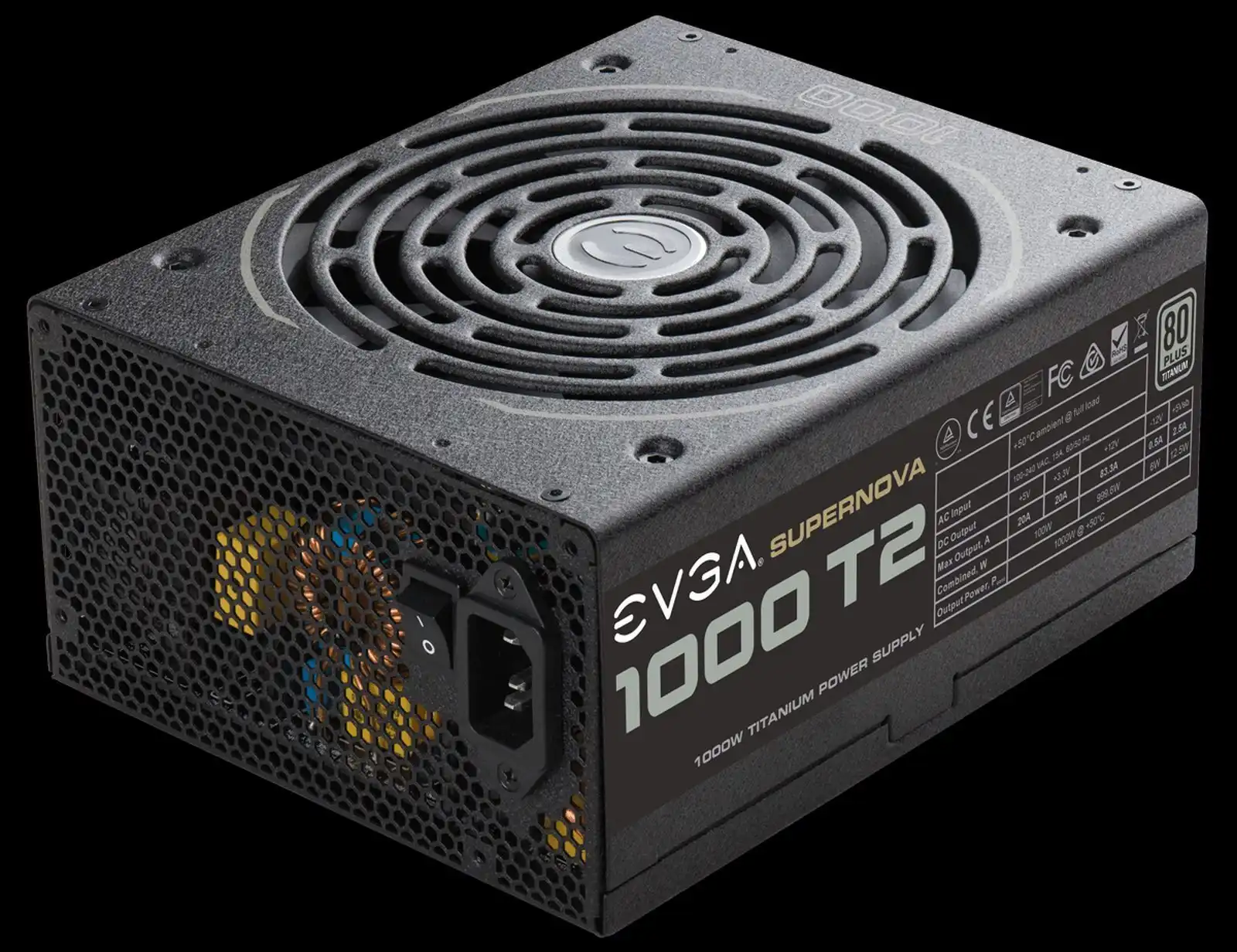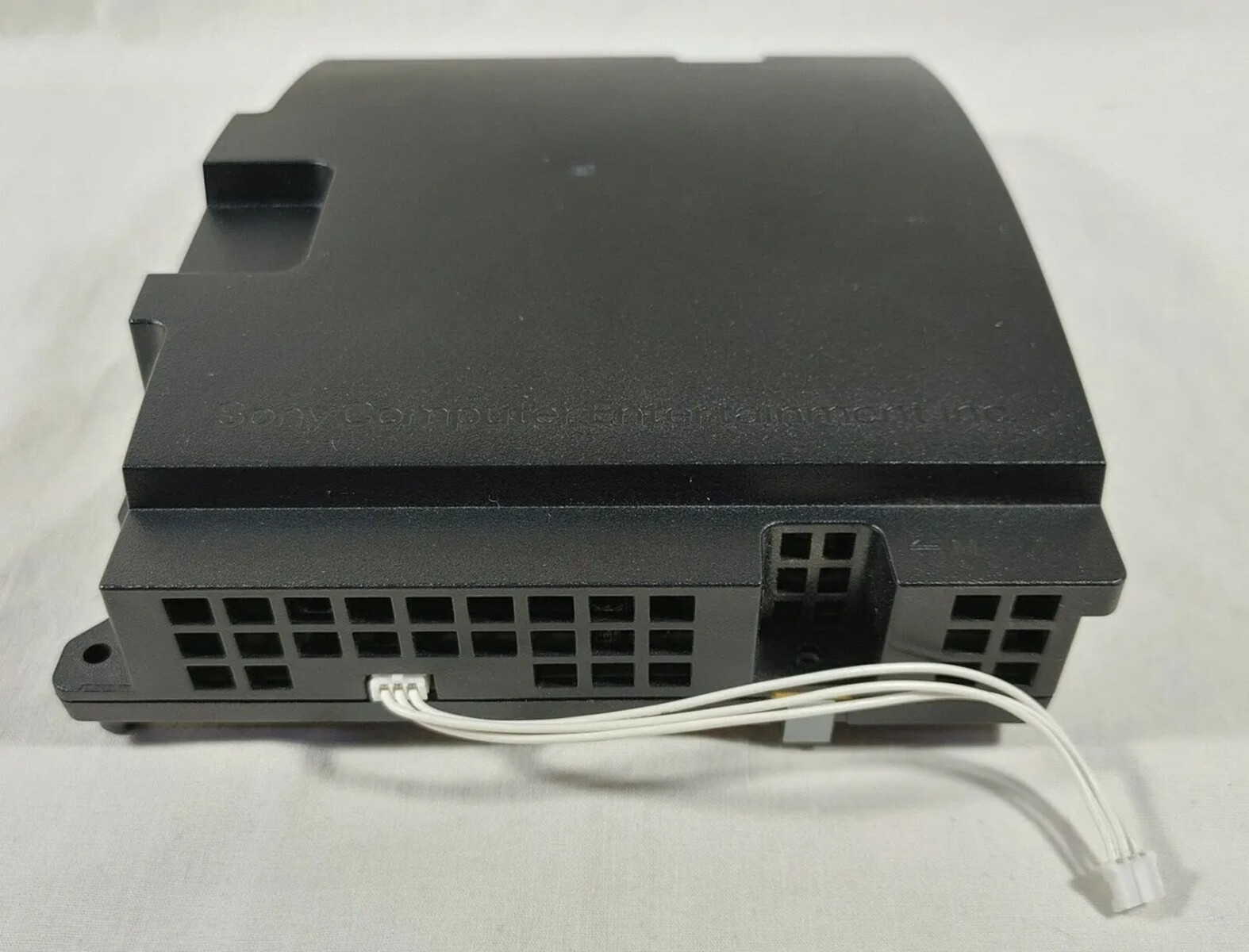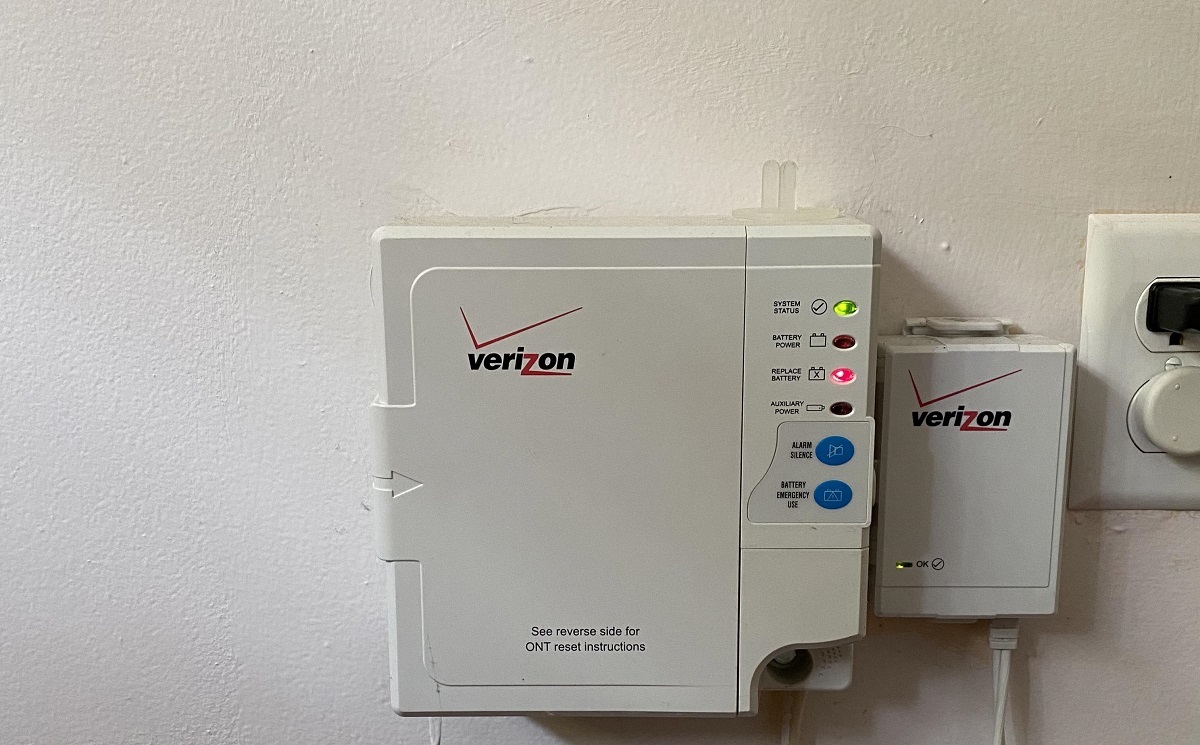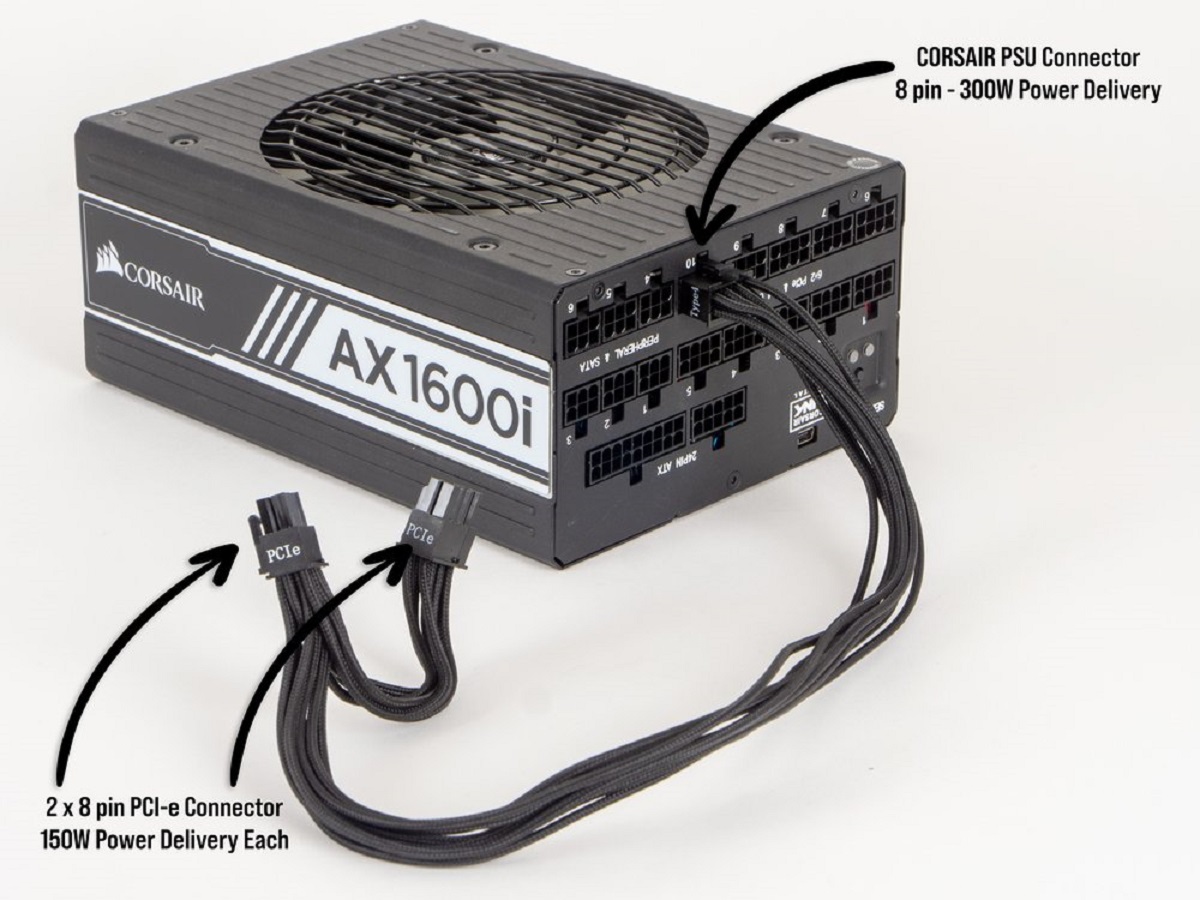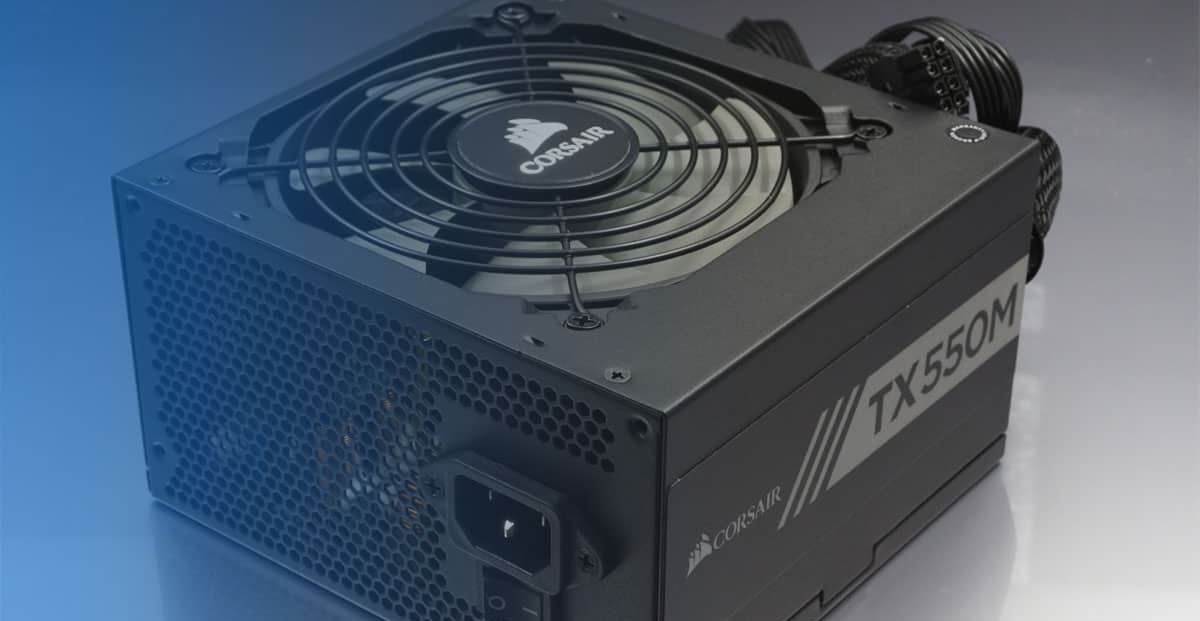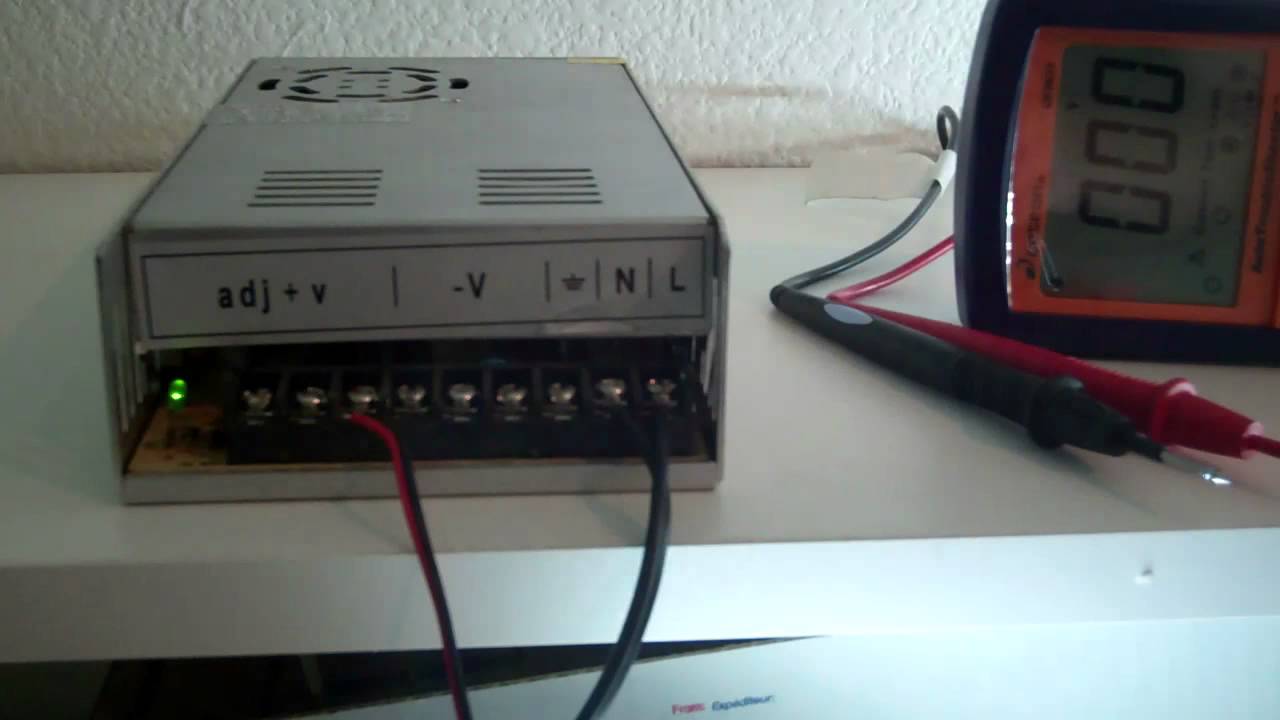Introduction
A power supply unit (PSU) is a vital component of any computer system, responsible for converting AC power from an electrical outlet into the DC power required by the various components within the system. Since different computers have different power requirements, it is crucial to ensure that the PSU you choose is compatible with your system.
Having a compatible PSU is not only essential for the smooth and efficient operation of your computer, but it also helps prevent potential damage to the components. Using an incompatible PSU can lead to overheating, instability, system crashes, and even permanent damage. Therefore, it is crucial to understand the various factors that determine PSU compatibility.
In this article, we will explore the key factors to consider when determining PSU compatibility for your computer system. We will discuss power requirements, form factor, connectors, cooling and ventilation, as well as efficiencies and certifications. Additionally, we will provide you with tools and resources to help ease the process of determining the compatibility of a PSU with your specific system.
By the end of this article, you will have a clear understanding of what to look for in a PSU to ensure proper compatibility, allowing you to make an informed decision when choosing a power supply unit for your computer.
What is a PSU?
A Power Supply Unit (PSU) is a crucial component in a computer system, responsible for converting the alternating current (AC) power from an electrical outlet into the direct current (DC) power needed by the various hardware components. It supplies the necessary power to the motherboard, processors, memory, graphics card, and other peripherals.
The PSU acts as the heart of the computer system, providing a stable and consistent power supply to ensure the proper functioning of all components. It regulates and delivers the appropriate voltage and current required by each component, protecting them from power surges and fluctuations.
PSUs are available in various wattages, and the power requirements of your system determine the wattage rating you need for the PSU. Higher-end systems with power-hungry components like high-performance processors and graphics cards will require a higher wattage PSU to handle the load, while basic systems with less demanding components can suffice with lower wattage PSUs.
In addition to power delivery, PSUs also play a vital role in maintaining system stability by providing clean and stable power. They are equipped with voltage regulation circuitry and various safety features like overvoltage protection, undervoltage protection, and short-circuit protection to safeguard your computer from power-related issues.
It is essential to choose a PSU from a reputable manufacturer with good build quality and reliable components. PSU quality directly impacts system stability, efficiency, and longevity.
Understanding the basic concepts of a PSU will help you when assessing PSU compatibility for your computer system. In the following sections, we will explore the factors to consider and ensure compatibility between your PSU and system.
Factors to Consider When Determining PSU Compatibility
When selecting a power supply unit (PSU) for your computer system, several factors need to be considered to ensure compatibility. These factors include power requirements, form factor, connectors, cooling and ventilation, efficiencies and certifications, and compatibility with your system.
1. Power requirements: The power requirements of your computer system are a crucial factor in determining PSU compatibility. This includes considering the wattage rating needed to power all the components within your system. A higher-end system with multiple graphics cards, high-performance processors, and a multitude of peripherals will require a higher wattage PSU, while a basic system with fewer components may require a lower wattage PSU.
2. Form factor: The form factor of the PSU must match the form factor of your computer case. The most common form factors for desktop PSUs are ATX (Advanced Technology eXtended) and micro ATX, but other form factors such as SFX (Small Form Factor), TFX (Thin Form Factor), and Mini-ITX are available for compact and specialized cases.
3. Connectors: PSU compatibility also depends on the availability of the necessary connectors for your components. Ensure that the PSU has the required motherboard connectors (such as 24-pin or 20+4-pin), CPU power connectors (4-pin or 8-pin), SATA power connectors for storage drives, and PCIe power connectors for graphics cards.
4. Cooling and ventilation: Adequate cooling and ventilation are essential for both the PSU and the overall system. The PSU should have proper cooling mechanisms like built-in fans, ventilation grilles, and sufficient airflow to prevent overheating. Compatibility with your system’s cooling configuration is crucial to maintain optimal temperature levels.
5. Efficiencies and certifications: It is advisable to choose a PSU with higher efficiency ratings, as they help reduce power consumption and generate less heat. Look for PSUs with certifications such as 80 PLUS, which ensures higher energy efficiency. Higher efficiency also translates to savings on electricity bills over time.
6. Compatibility with your system: Finally, ensure that the PSU is compatible with your system in terms of hardware and software requirements. Check manufacturer guidelines, system compatibility lists, and user reviews to ensure there are no known compatibility issues with your specific system configuration.
Considering these factors will help you determine PSU compatibility and select the right power supply unit for your computer system. Keep in mind that a compatible PSU not only ensures proper functionality but also contributes to system stability and longevity.
Power Requirements
Understanding the power requirements of your computer system is essential when determining PSU compatibility. The power requirements depend on the components you have installed, such as the CPU, graphics card, memory, storage drives, and peripherals like fans and LED lights. Ensuring that your PSU can provide enough power for all these components is vital for the stable operation of your system.
The power requirements are typically measured in watts (W). Different components have different power consumption levels, and it’s important to consider both the maximum power draw and the overall power requirements of your system. As technology advances, components become more power-efficient, but high-end CPUs, graphics cards, and other demanding hardware can still consume a significant amount of power.
One way to determine the power requirements of your system is by referring to the specifications provided by the component manufacturers. These specifications often include the recommended power supply wattage for optimal performance. Additionally, various online calculators can help estimate the power requirements based on the components you have selected.
When selecting a PSU, it’s generally advisable to choose one with a higher wattage rating than what your system requires. This provides a buffer and ensures that the PSU is not operating at its maximum capacity, which can increase its lifespan and reduce the risk of overheating or instability. It also allows for future upgrades or additions to your system that may require more power.
It’s important to note that an inadequate power supply can result in system instability, random crashes, or even complete shutdowns. On the other hand, an overpowered PSU may be unnecessarily expensive and less energy-efficient. It’s crucial to find the right balance between having enough power to support your components and not exceeding what is necessary.
When considering power requirements, it’s also important to prioritize the quality and reliability of the PSU. A reputable brand with high-quality components and efficient power delivery provides a stable power supply to your system, ensuring longevity and minimizing the risk of damage to your components. Invest in a reliable PSU that meets the power requirements of your system and offers good efficiency ratings, such as those certified by 80 PLUS.
By carefully assessing the power requirements of your system and selecting a PSU that can meet those demands, you can ensure optimal performance, stability, and longevity for your computer system.
Form Factor
When determining PSU compatibility for your computer system, it is important to consider the form factor of the power supply unit (PSU). The form factor refers to the physical size and shape of the PSU, which must match the form factor of your computer case.
The most common form factor for desktop PSUs is ATX (Advanced Technology eXtended). ATX PSUs are widely used and come in various wattages and configurations to suit different system requirements. They are typically rectangular in shape and fit into ATX-compatible computer cases. However, it is essential to check the specific measurements and mounting holes of both the case and the PSU to ensure compatibility.
In addition to the standard ATX form factor, there are other form factors available for cases with specific requirements. Some examples include:
- Micro ATX: This form factor is smaller than ATX and is commonly used in compact or smaller-sized computer cases. Micro ATX PSUs have a reduced physical footprint and fewer connectors but still offer sufficient power for most systems.
- SFX (Small Form Factor): SFX PSUs are designed for use in small form factor cases, which are usually more compact and portable. These PSUs have a smaller size and a unique mounting system that allows them to fit into smaller cases while still providing adequate power.
- TFX (Thin Form Factor): TFX PSUs are even smaller than SFX PSUs and are commonly used in slim or low-profile computer cases. These PSUs have a thin and elongated shape, making them ideal for systems with limited space.
- Mini-ITX: Mini-ITX cases are designed for small-scale or minimalist systems. These cases often come with an integrated power supply, making PSU compatibility less of a concern. However, if you plan to use a separate PSU, ensure it is Mini-ITX compatible in terms of size and mounting.
When selecting a PSU, it is essential to choose one that matches the form factor of your computer case. This ensures proper installation, secure mounting, and sufficient space within the case for other components. Improperly sized PSUs can lead to compatibility issues, such as difficulty in mounting or a lack of space for other hardware.
It is also worth noting that some PSUs offer modular cabling, allowing you to connect only the necessary cables to your components. This can help with cable management and overall system aesthetics. However, when considering a modular PSU, ensure that the connectors and cables provided are compatible with your system requirements.
By considering the form factor of the PSU and ensuring it matches the form factor of your computer case, you can ensure compatibility and proper installation, leading to a well-organized and efficient system.
Connectors
When determining PSU compatibility for your computer system, it is important to consider the available connectors on the power supply unit (PSU) and whether they can accommodate the components in your system. Connectors play a vital role in effectively delivering power to various hardware components within the computer.
The PSU should have the necessary connectors to power the motherboard, CPU, storage drives, graphics card, and other peripherals. Below are some key connectors to consider:
- Motherboard connectors: The most common motherboard connector is the 24-pin or 20+4-pin connector, which provides power to the motherboard. Ensure that your PSU has the appropriate connector to match your motherboard’s power requirement.
- CPU power connector: The CPU power connector supplies power to the processor. It is typically a 4-pin or 8-pin connector (usually labeled as CPU or EPS). Check the requirements of your CPU and motherboard to ensure compatibility.
- SATA power connectors: SATA power connectors are used to power storage drives such as hard drives and solid-state drives. Most modern PSUs offer multiple SATA power connectors, so ensure that the PSU has enough connectors to support your storage devices.
- PCIe power connectors: Graphics cards often require additional power beyond what the motherboard can provide. PCIe power connectors, such as 6-pin or 8-pin connectors, are used to supply power to the graphics card. Check the power requirements of your graphics card and make sure the PSU has the appropriate connectors.
- Peripheral connectors: Other peripherals like fans, LED lights, and additional hardware may require power connections. Molex or peripheral connectors are common for such peripherals. Verify if your PSU provides enough peripheral connectors for your specific needs.
It is essential to ensure that the PSU has the correct connectors in both quantity and type to power your components. Many PSUs come with a variety of connectors, allowing flexibility for different system configurations.
Another consideration is the cable length of the connectors. Depending on the layout of your computer case and the distance between the PSU and the various components, you may need longer cables to ensure a neat and organized cable management setup. Some PSUs offer modular or semi-modular designs, allowing you to use only the required cables and minimize cable clutter.
When selecting a PSU, research the compatibility with your system’s components and check the manufacturer’s specifications and requirements for the connectors. Additionally, consulting user reviews and forums can provide valuable insights into the compatibility and compatibility issues others may have encountered with specific PSUs.
By ensuring that your PSU has the necessary connectors for your components, you can avoid compatibility issues and ensure a proper, reliable power supply to all hardware within your computer system.
Cooling and Ventilation
When determining PSU compatibility for your computer system, it is crucial to consider the cooling and ventilation capabilities of the power supply unit (PSU). Proper cooling is essential to maintain optimal performance, prevent overheating, and ensure the longevity of the PSU and other components in your system.
PSUs generate heat during operation, and without adequate cooling mechanisms, this heat can build up and cause temperature-related problems. Therefore, it is important to choose a PSU that is designed to efficiently dissipate heat and keep it operating within safe temperature limits.
One of the primary cooling mechanisms in a PSU is the presence of built-in fans. These fans help circulate airflow through the PSU, dissipating heat and maintaining a cooler operating temperature. The size, number, and quality of the fans can vary between PSU models, and it is worth considering the cooling performance and noise levels associated with the fan configuration.
In addition to fans, the PSU should also feature proper ventilation grilles and gaps in its design. These allow the PSU to draw in cool air from the surrounding environment and expel hot air, effectively removing heat from the unit. Adequate ventilation ensures optimal cooling and prevents the buildup of hot air within the PSU, which can lead to reduced efficiency and potential performance issues.
It’s important to consider the overall cooling configuration of your computer system when selecting a PSU. Ensure that the airflow within the case allows for proper ventilation of the PSU. Good cable management, which involves organizing and routing cables effectively, can also contribute to improved airflow and cooling efficiency.
In situations where optimal cooling cannot be achieved through the built-in cooling mechanisms of the PSU alone, additional cooling solutions such as case fans, liquid cooling systems, or aftermarket PSU coolers can be utilized. However, it is crucial to ensure compatibility between these cooling components and the PSU.
Understanding the cooling and ventilation capabilities of the PSU and how they align with your system’s cooling requirements is essential when determining PSU compatibility. A well-cooled PSU ensures stable operation and longevity while preventing thermal issues that can negatively impact overall system performance.
Efficiencies and Certifications
Efficiency and certifications are important factors to consider when determining PSU compatibility for your computer system. They play a significant role in both the performance and energy efficiency of the power supply unit (PSU).
Efficiency refers to how well the PSU converts the AC power from the electrical outlet into the DC power required by the components in your system. Higher efficiency means that less power is wasted during this conversion process, resulting in more of the input power being utilized by your computer’s hardware. This not only reduces energy consumption but also leads to lower heat generation and a cooler operating PSU.
Efficiency ratings for PSUs are commonly denoted by certifications such as 80 PLUS. The 80 PLUS certification program establishes different levels of efficiency requirements for PSUs, including 80 PLUS, 80 PLUS Bronze, 80 PLUS Silver, 80 PLUS Gold, 80 PLUS Platinum, and 80 PLUS Titanium. Each level represents a higher efficiency rating, with Titanium being the most efficient.
When selecting a PSU, it is advisable to choose one with a higher efficiency rating. Higher efficiency PSUs typically cost more initially but can lead to long-term savings on electricity bills due to reduced power consumption. Additionally, they generate less heat, resulting in quieter operation and improved system stability.
Certifications such as 80 PLUS also ensure that PSUs have been tested and verified by an independent organization to meet the specified efficiency standards. This provides confidence in the quality and performance of the PSU.
In addition to the 80 PLUS certification, other certifications like ENERGY STAR can also indicate good energy efficiency and environmental consciousness. ENERGY STAR-certified PSUs meet strict guidelines for energy efficiency set by the Environmental Protection Agency (EPA).
It’s important to note that efficiency can vary at different load levels. PSUs generally perform at their highest efficiency when operating at around 50% of their maximum load. Therefore, consider the power requirements of your system and choose a PSU with a wattage rating that allows for optimal efficiency under typical usage scenarios.
Furthermore, reputable PSU manufacturers often provide efficiency and performance data, including load efficiency curves, to help consumers make informed decisions. It is worth consulting these specifications and reviews to ensure compatibility based on your system’s power requirements and efficiency preferences.
By considering efficiencies and certifications, you can select a PSU that not only meets the power demands of your system but also delivers optimal energy efficiency, reducing electricity costs and minimizing environmental impact.
Compatibility with Your System
When determining PSU compatibility for your computer system, it is crucial to consider the overall compatibility between the PSU and your specific system configuration. This involves assessing various hardware and software requirements to ensure seamless integration and reliable operation.
One key aspect of compatibility is the physical aspects of the PSU, such as the size, shape, and form factor. Ensure that the PSU fits properly within your computer case, with appropriate mounting holes, clearance, and cable management options. Assessing the dimensions and specifications of both the PSU and case beforehand can help prevent compatibility issues during installation.
Compatibility also extends to the power requirements of your system. Consider the wattage rating of the PSU and ensure it meets the power demands of your components. Higher-end systems with power-hungry processors, multiple graphics cards, and numerous peripherals will generally require a higher wattage PSU to provide sufficient power. On the other hand, basic systems with less demanding components can function well with a lower wattage PSU.
Another consideration is the type and number of connectors available on the PSU. Ensure that the PSU has the necessary connectors to power your motherboard, processor, graphics card, storage devices, and other peripherals. Verify compatibility between the PSU’s connectors and the requirements of your components, particularly when it comes to specialized connectors like PCIe power connectors for high-end graphics cards.
Heat dissipation and cooling compatibility should also be evaluated. Determine whether the PSU’s cooling mechanisms, such as built-in fans and ventilation grilles, align with your system’s overall cooling configuration. Poor cooling compatibility can lead to overheating, reduced performance, and potential damage to the PSU and other components.
Compatibility also extends to the software side of your system. Ensure that the PSU is compatible with the operating system you are using, as well as any specific software requirements related to power management or monitoring.
Lastly, consider compatibility with any planned future upgrades or additions to your system. A PSU with some headroom in terms of wattage can accommodate potential upgrades down the line, saving you from having to replace the PSU when you decide to enhance your system’s performance.
Researching manufacturer guidelines, consulting system compatibility lists, and reading user reviews can provide valuable insight into potential compatibility issues and the experiences of others who have used the same PSU with similar system configurations.
By ensuring compatibility between the PSU and your system’s hardware, software, and future plans, you can select a PSU that seamlessly integrates with your system, providing reliable power delivery and optimal performance.
Tools and Resources to Help Determine PSU Compatibility
When determining PSU compatibility for your computer system, there are several useful tools and resources available to assist you in making an informed decision. These tools can help you evaluate the power requirements, form factor, connectors, cooling, and other factors related to PSU compatibility.
1. Online PSU Calculators: There are several online PSU calculators available that can estimate the power requirements of your system based on the components you have or plan to install. These calculators consider factors such as the CPU, graphics card, memory, storage drives, and peripherals to determine the approximate wattage rating you need for your PSU.
2. Manufacturer PSU Compatibility Lists: Many motherboard and case manufacturers provide compatibility lists or guidelines on their websites. These lists specify the PSU models that have been tested and verified to be compatible with their products. Checking these lists can ensure compatibility between the PSU and your specific motherboard or case.
3. User Reviews and Forums: User reviews and forums can provide valuable insights into the experiences of others who have used specific PSUs with similar system configurations. Reading about real-world compatibility issues, successes, and recommendations can help you make an informed decision.
4. PSU User Manuals and Specifications: Consulting the user manual and specifications provided by the PSU manufacturer can offer detailed information about the PSU’s dimensions, connectors, cooling capabilities, and compatibility guidelines.
5. PSU Manufacturer Support: If you have specific compatibility questions or doubts, reaching out to the PSU manufacturer’s support team directly can provide clarity and assistance. They can provide accurate information regarding compatibility and make recommendations based on your system requirements.
6. PC Part Picker: PC Part Picker is a popular online tool that assists users in building and customizing their computer systems. It offers a compatibility check feature that can help ensure compatibility between the PSU, motherboard, CPU, graphics card, and other components. It also provides a wide range of PSU options to choose from.
Utilizing these tools and resources can help ease the process of determining PSU compatibility for your computer system. They provide valuable information, insights, and recommendations that can guide you in selecting a PSU that meets your system’s requirements and ensures seamless integration and reliable performance.
Conclusion
Choosing a compatible power supply unit (PSU) is crucial for the smooth and reliable operation of your computer system. By considering factors such as power requirements, form factor, connectors, cooling and ventilation, efficiencies and certifications, and overall compatibility with your system, you can ensure that your PSU meets the necessary specifications and aligns with your specific hardware and software needs.
Understanding the power requirements of your system and selecting a PSU with an appropriate wattage rating is essential to provide sufficient power for all your components. Additionally, matching the form factor of the PSU with your computer case ensures a proper fit and installation. Considering the availability and compatibility of connectors ensures that all your components receive the necessary power supply.
Proper cooling and ventilation are crucial to maintain optimal performance and prevent overheating. Choosing a PSU with appropriate cooling mechanisms, such as built-in fans and proper ventilation grilles, helps dissipate heat efficiently.
Efficiency ratings and certifications, such as the 80 PLUS certification, indicate the energy efficiency of the PSU and can contribute to long-term savings and reduced environmental impact. Considering compatibility not only with your hardware but also with your software and any future upgrades or additions helps ensure a seamless integration and future-proofing of your system.
Utilizing tools and resources, such as online PSU calculators, manufacturer compatibility lists, user reviews, and support resources, can further assist you in determining PSU compatibility and making informed decisions.
Remember that compatibility is crucial for the proper functioning and longevity of your computer system. Taking the time to research and evaluate PSU compatibility will help you select the right power supply unit, ensuring stable performance, efficiency, and reliability for your computer system.







